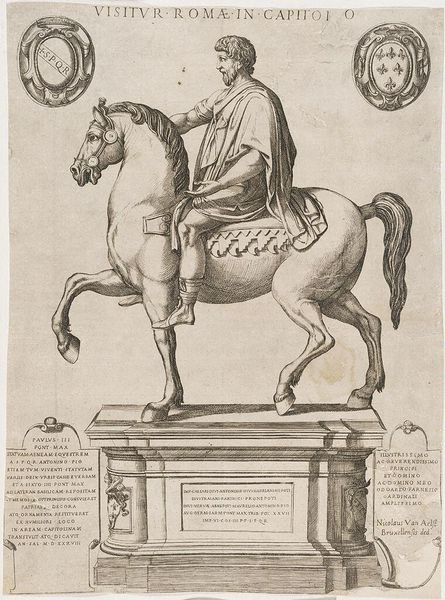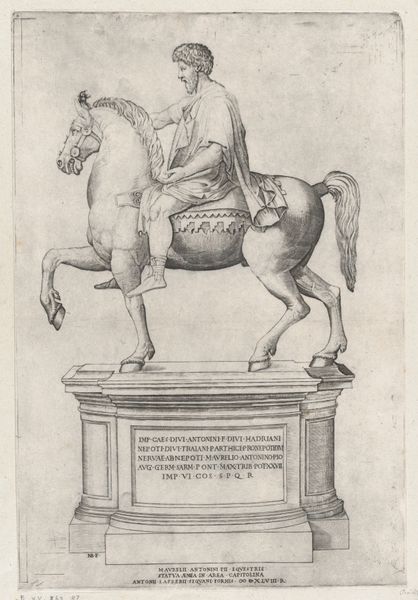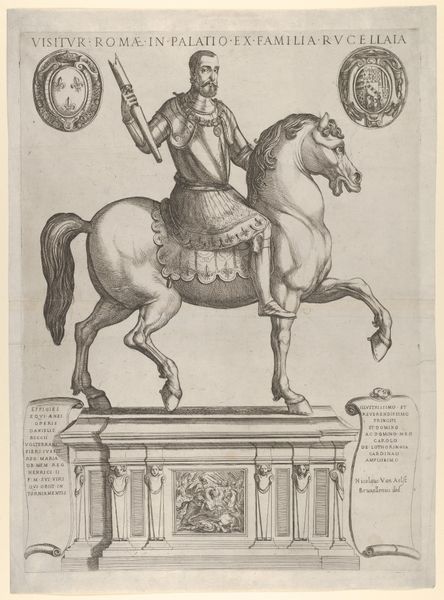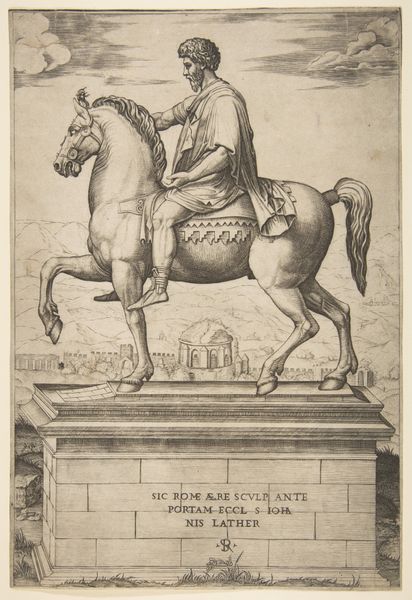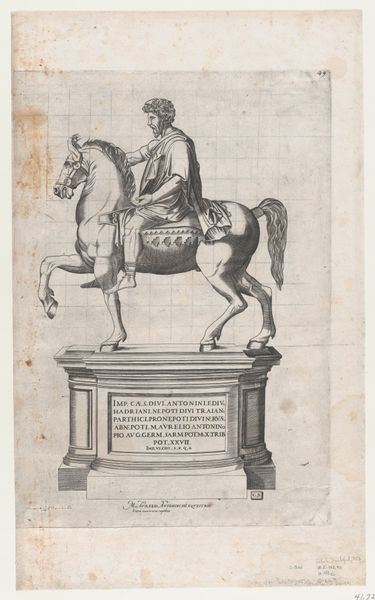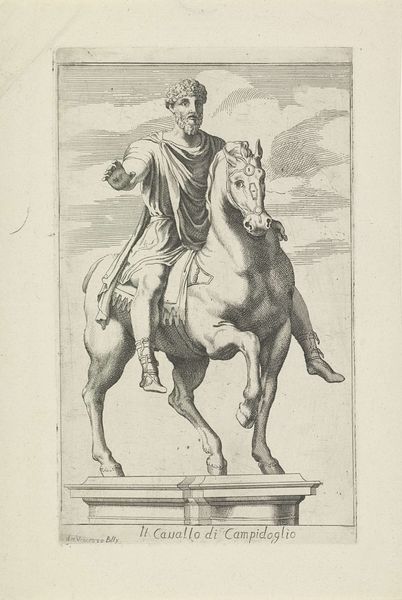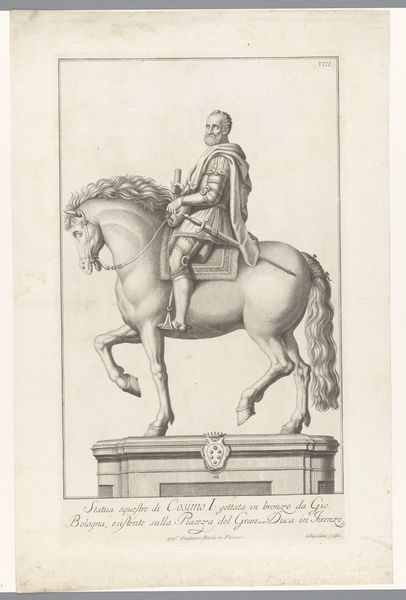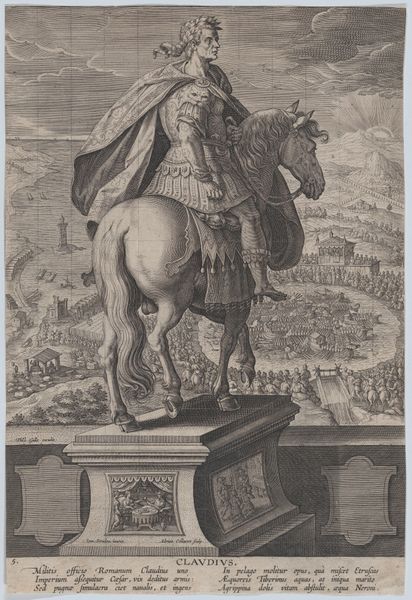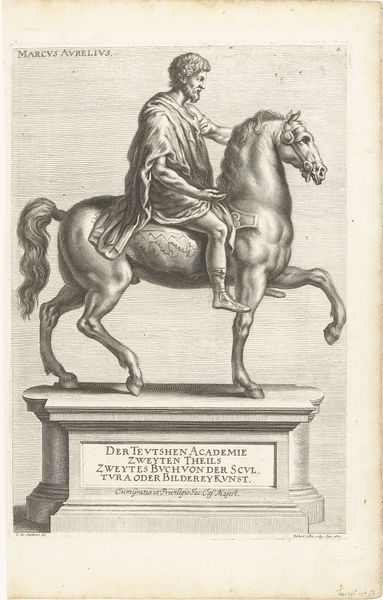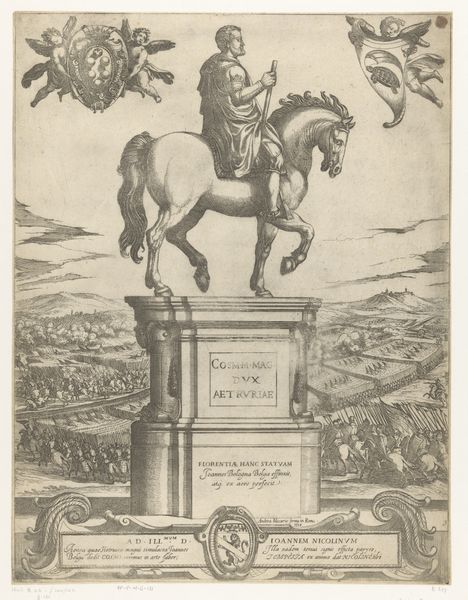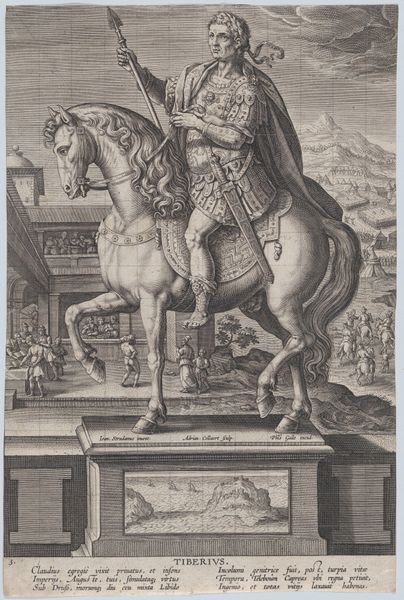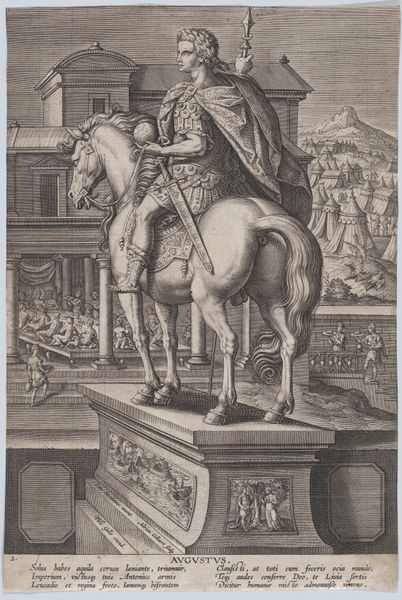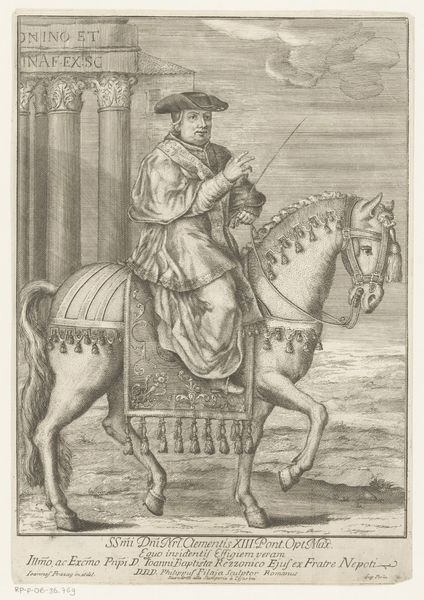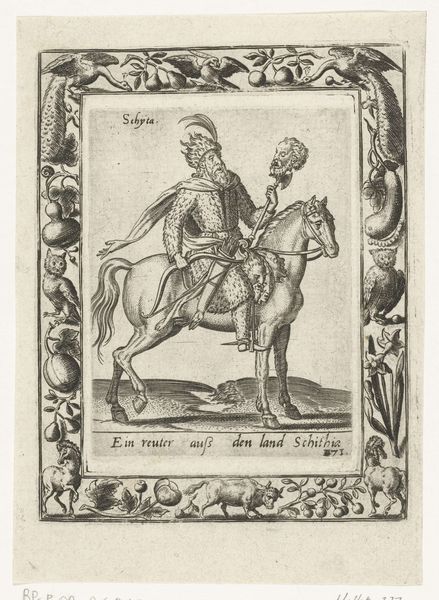
print, engraving
#
portrait
#
baroque
# print
#
old engraving style
#
classical-realism
#
figuration
#
line
#
cityscape
#
history-painting
#
engraving
Dimensions: height 462 mm, width 341 mm
Copyright: Rijks Museum: Open Domain
This print, made by Antonio Tempesta around the turn of the 17th century, depicts the equestrian statue of Marcus Aurelius. Although it is a two-dimensional image, the processes used to create it speak volumes about materiality and making. Engraving is an intaglio process. Lines are incised into a metal plate, often copper, using a tool called a burin. The plate is then inked, and the surface wiped clean, leaving ink only in the engraved lines. High pressure is then used to transfer the ink onto paper, creating a raised effect. The fineness of the lines, achieved by a highly skilled artisan, allows for incredible detail. Here, Tempesta used these qualities to create an image that conveys the imposing quality of the original sculpture. The statue, which has survived from antiquity, testifies to the enduring power of imperial Rome. Tempesta’s print participates in this aura of power, disseminating it through the reproducible medium of engraving. Consider the labor involved: from the mining of the copper, to its transformation into a printing plate, to the skilled work of the engraver. These are all ingredients in the image’s overall effect.
Comments
No comments
Be the first to comment and join the conversation on the ultimate creative platform.
